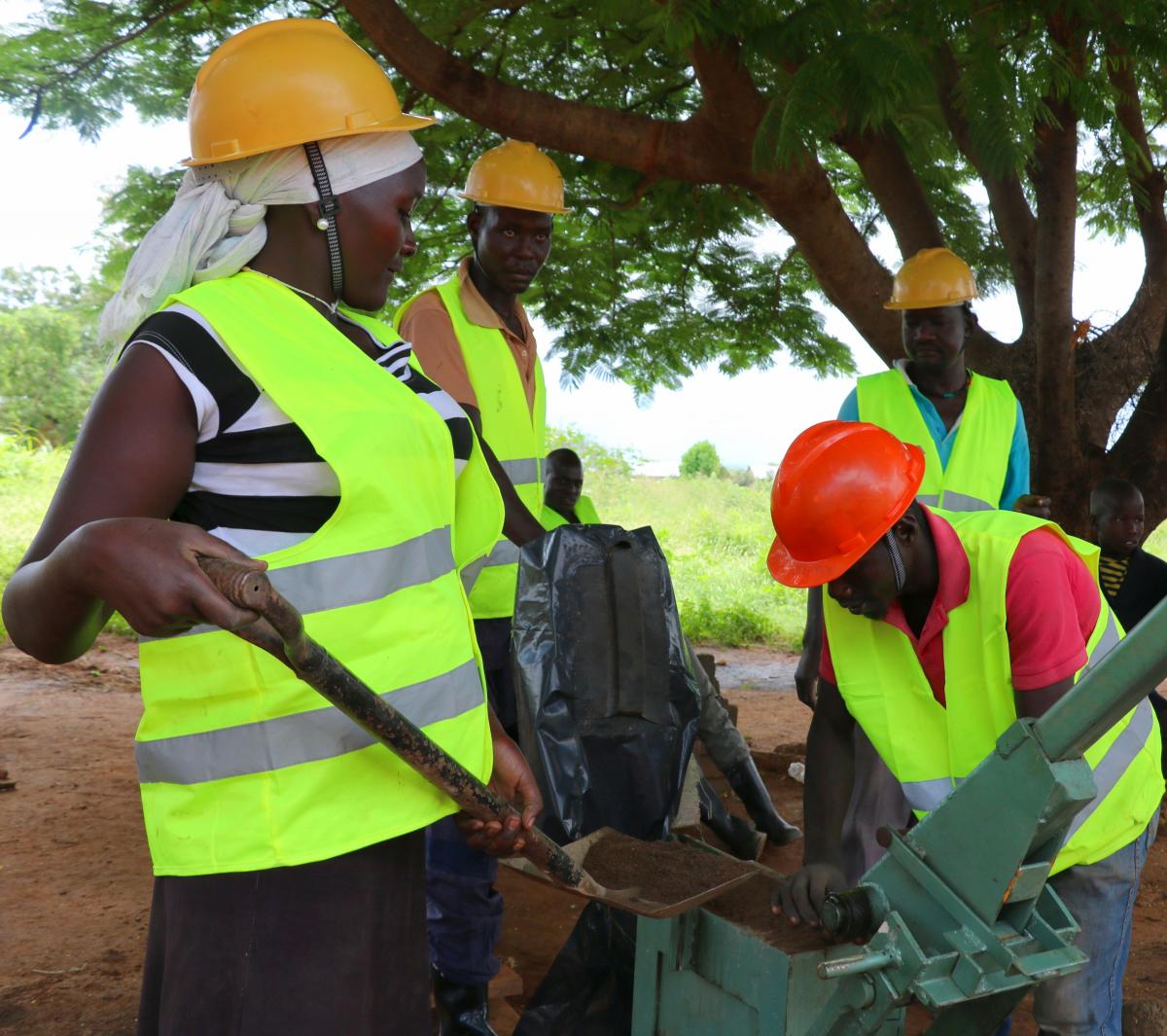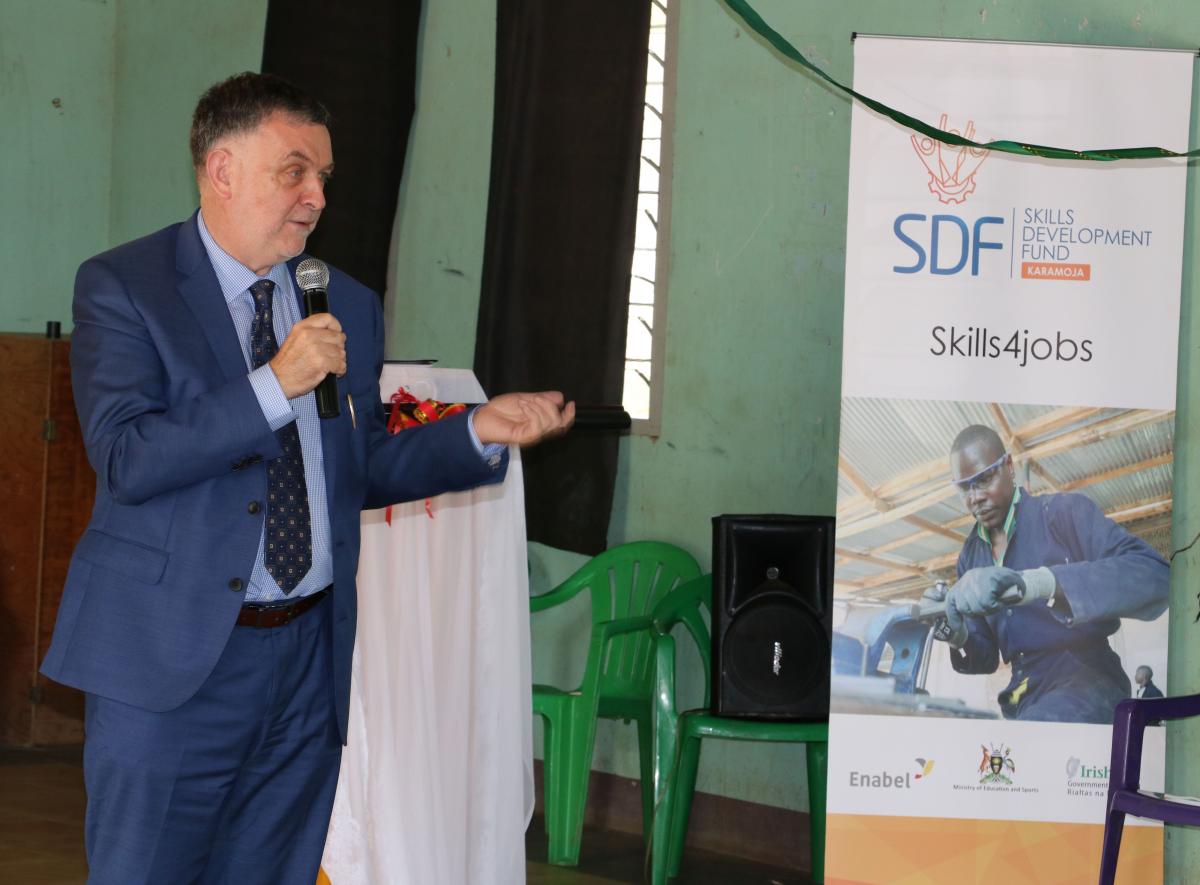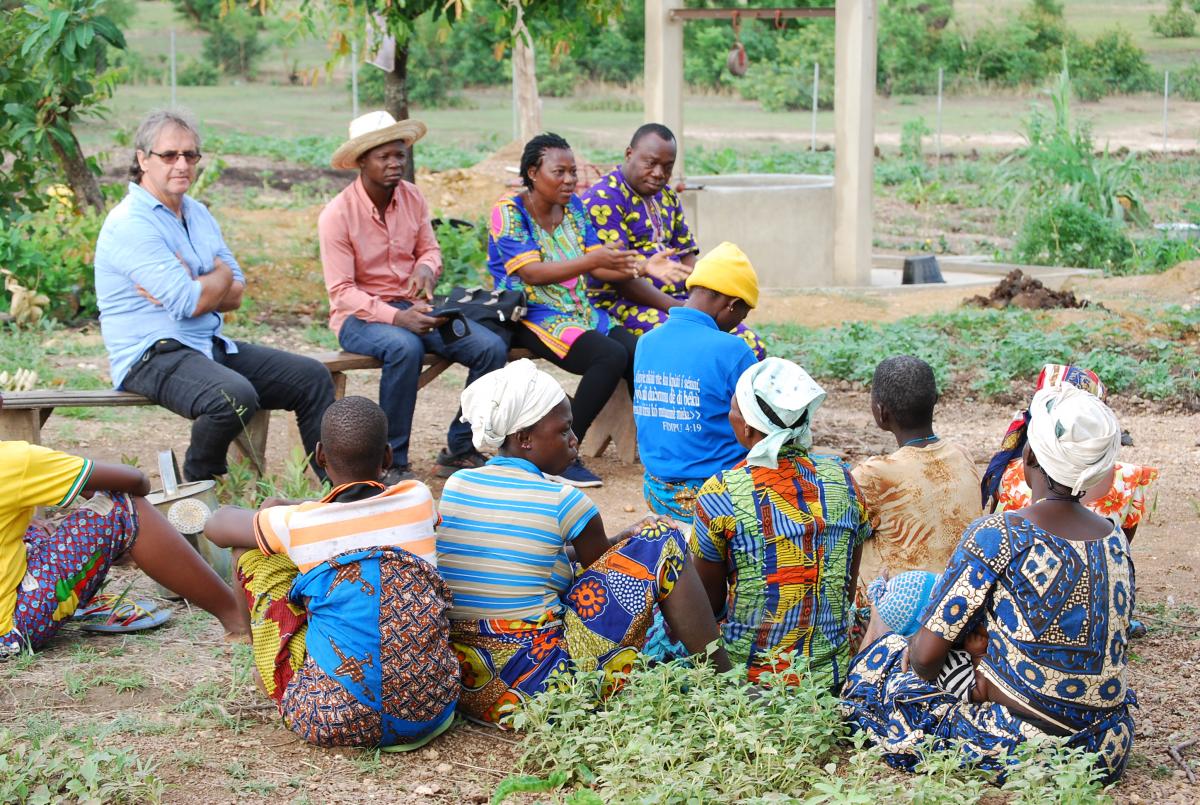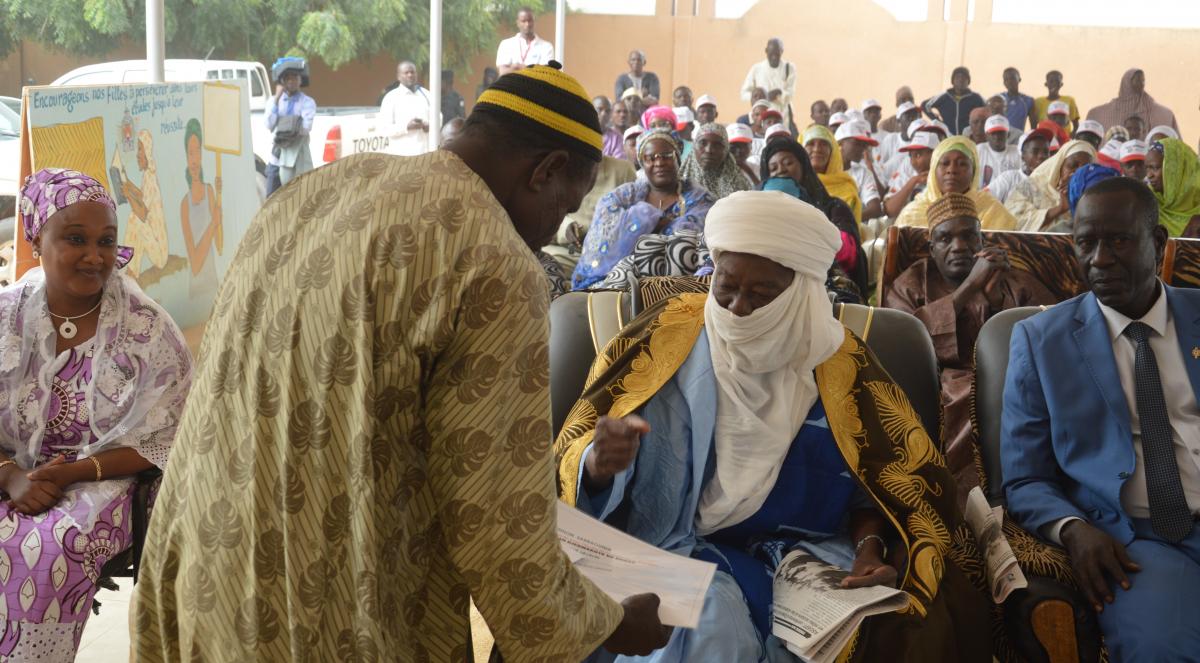Opzoeken
1950 - 1965 van 2520 nieuws bekijken
-
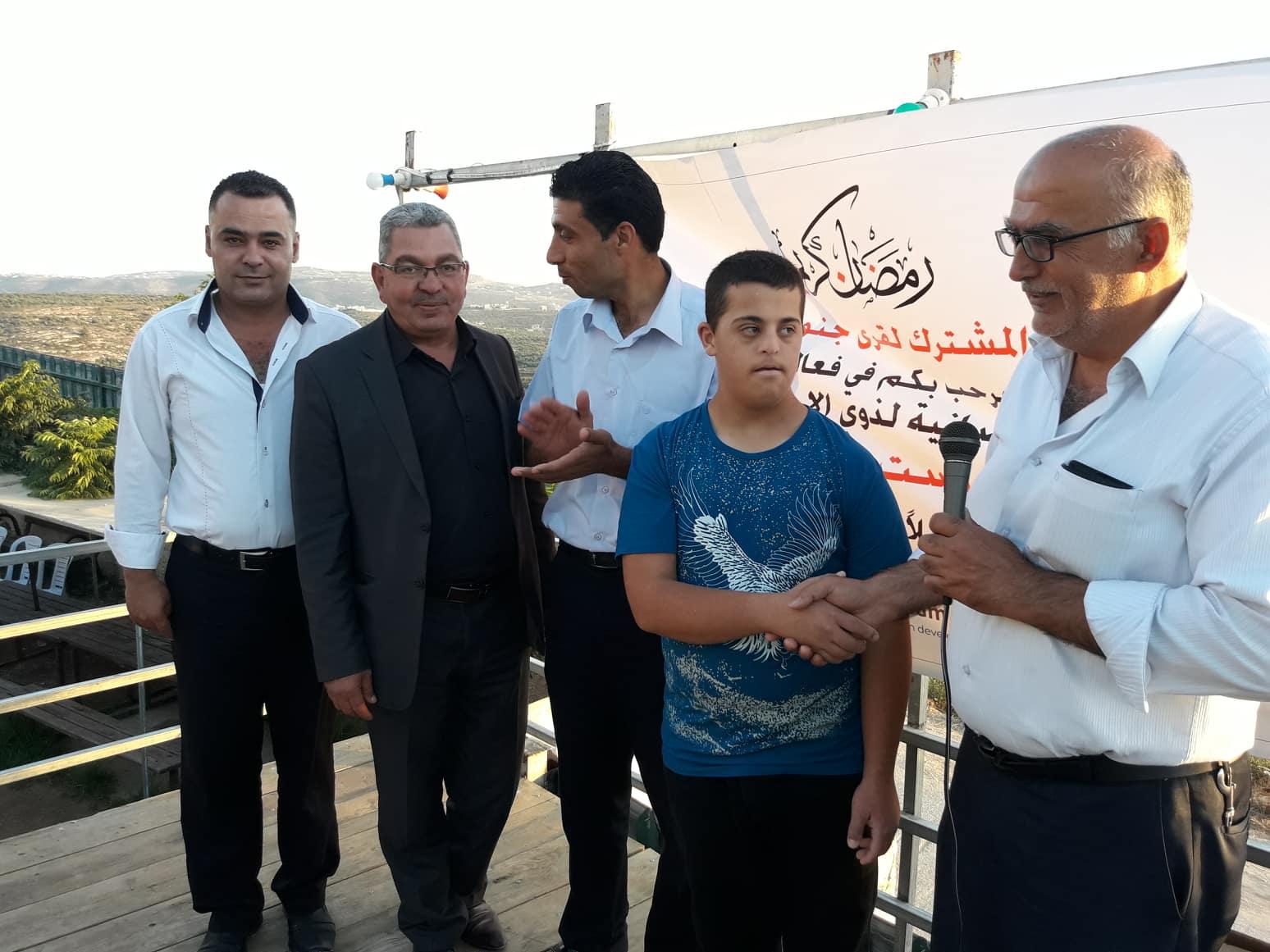
Iftar celebrations for people with disabilities in the Beita cluster
Laura SCHILLEMANS | 18/06/2018
Last week, the Joint Services Council of the villages south-east of Nablus organized a special Ramadan evening called “You are not alone” for people with disabilities. The president, members and director of the Joint Service Council, representatives from the Local Governance units and local institutes joined the group of 80 people – which was made up of people with disabilities and their families – to celebrate the holy month of Ramadan during a group iftar at the Beita cluster. Next to the iftar, young kids from the cluster performed on stage and sang songs. At the end of the evening, the Joint Service Council handed out gifts to the participants. Later that week, the cluster also provided essential medical tools to help disabled people in the cluster. This activity was supported by Enabel (the Belgian Development Agency), as part of the Local Governance program.
-
A new strategy is under development at REG to ensure gender mainstreaming in the energy sector
Ellen VAN HIMBERGEN | 18/06/2018
From the 13th of 14th of June, elected members of the gender advisory committee in Rwanda Energy Group are in a workshop to establish a gender mainstreaming program and set timeframes and targets for a 3 years action plan. This gender mainstreaming program was first launched On March 23 2018 during the workshop to celebrate the International Women’s Day at Rwanda Energy Group under the theme « Empowering REG Women to Energize Rwanda », and is supported by Enabel’s Institutional Strengthening and Capacity Building project in the Energy Sector (CDEU). The Energy sector in Rwanda still has a small number of staff women. This is due to the country’s historical and cultural background which discouraged women involvement in the technical works. Despite the current political will in Rwanda and Government efforts to promote gender balance in all sectors, the energy sector still has a very low rate. As of today, REG women make up approximately 18% of the total staff.In a bid to be able to reach the Rwandan Government targets of 30% women representation at all levels, Rwanda Energy Group has put in place a special committee in charge of establishing the program to ensure the gender mainstreaming in this sector. Among the strategic objectives of this program include the representation of women at all levels of REG management, equal opportunities to promotions, equal access to career development programs as well as ensuring a working environment that is free from any sexual harassment. “We believe that having women in the organization and especially in the management will contribute a lot to the success of our company” said the CEO of REG during the launching ceremony of the strategy.
-

Belgian Alumni Fellowship Fund Award 2018
Huong TRANTHANH | 12/06/2018
On 6th June 2018, an Award Ceremony of the Belgian Alumni Fellowship Fund (BAFF) was held in Hanoi. 10 among the 16 selected candidates were presented with the scholarship certificate by Enabel Resident Representative in Vietnam, Mrs. Krista Verstraelen. Among the 16 successful candidates, 6 will travel to Belgium to attend international conferences, to work in join researches with Belgian partners or to act as guest lecturer in Ghent, Liege, or VUB. The other scholarship holders will implement action researches in Vietnam, in coordination with Belgium professors from Belgium universities or the Flemish Organization for Technological Research(VITO). The BAFF is operated by the Facility to Capacity Building project (VIE 11 888 11) with an aim to contribute to quality human resource of Vietnam and to promote partnerships between Vietnam and Belgium through seed fund grants to Belgium alumni. These alumni initiatives must proved to contribute to strengthen academic and research capacity of alumni, expand alumni professional networks and/or promote innovation and linkage with the business sector under 02 awards - Travel grants and Small action grants.
-
Building a better future while protecting the environment
Hanna DEKERK | 08/06/2018
“I was sitting at home doing nothing but now I am getting skills” says a proud 24-year old Fatima Namer, while she participates in the Interlocking Soil Stabilizing Blocks (ISSB) training in Matany. “My family is happy that I’m trying to get a better future." ISSB trainees are taught to produce building blocks with a brick pressing machine, which contrasts with the traditional method of baking bricks in a firewood oven. As the ISSB blocks need less cement and no firewood they pose a cheaper and eco-friendly production alternative.These instant trainings are organized by Enabel’s Support to Skilling Uganda (SSU) project, as part of the Skills Development Fund, with financial support from Irish Aid. The aim is to provide relevant and qualitative instant-trainings of 10 to maximum 100 hours. Trainees are selected through the local livelihood actors, in this case the Matheniko Development Forum, who provide pre-training and post-training support to beneficiaries. 32-year old trainee Moses Angore participates in the ISSB training because he wants to work in the construction sector. “It offers work opportunity, not only in Karamoja but all over the country." He believes that all Karamojong should be able to participate, even the girls: “We would be biased if we only gave this opportunity to men. I believe a girl can also do this work." The bricks are sold after the training “Currently there is demand for curved earth blocks so we focus on producing those.” adds instructor Eric Mpaza. After the brickmaking, trainees learn how to build a traditional Karamojong hut using only eco-friendly construction materials, sourced from the surrounding savannah.Equipping young Karamojong with employable construction skills increases livelihood opportunities and protect the natural resources in the region.
-
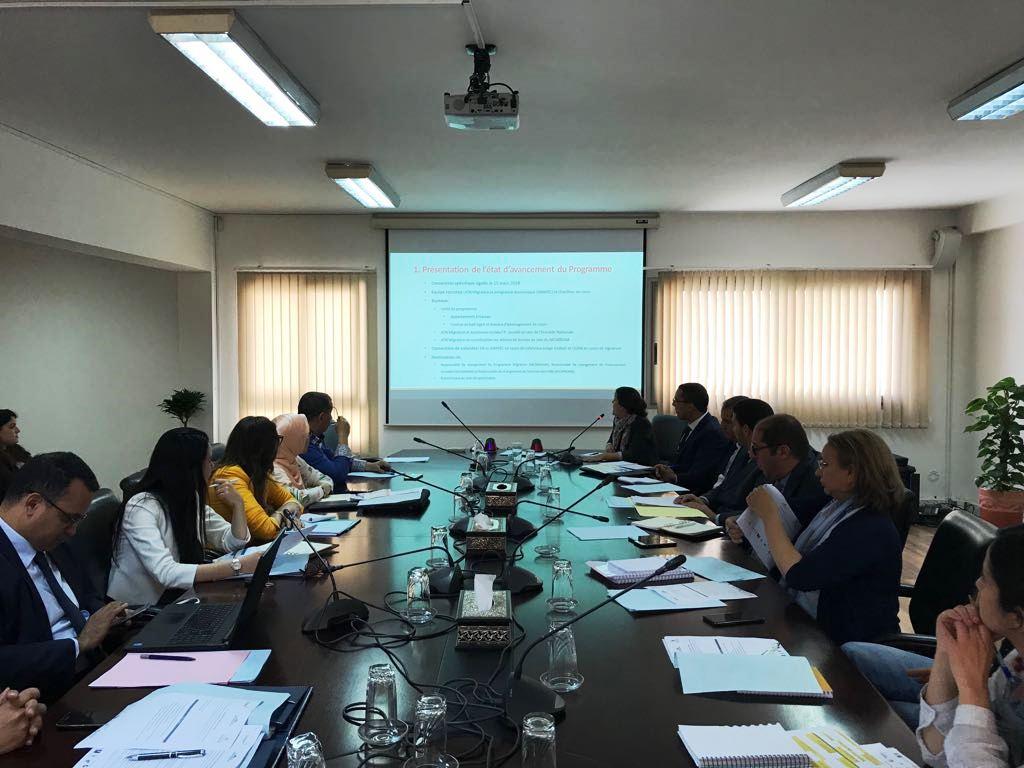
Le « Programme d’appui à la gestion de la thématique migratoire » prêt à démarrer après la première réunion de son Comité de Pilotage
Justine COLOGNESI | 07/06/2018
La première réunion du Comité de Pilotage du « Programme d’appui à la gestion de la thématique migratoire » d’Enabel a eu lieu ce mardi 5 juin 2018 au siège du Ministère délégué chargé des Marocains Résidant à l’Etranger et des Affaires de la Migration (MCMREAM) à Rabat. MCMREAM, Entraide Nationale, Agence nationale de promotion de l'emploi et des compétences (ANAPEC), Confédération Générale des Entreprises du Maroc (CGEM), tous les partenaires d’Amuddu et de MBI, les deux projets qui composent actuellement ce programme, se sont rassemblés afin de faire le point sur son état d’avancement. Ce fut l’occasion de discuter de la planification des activités pour cette première année de mise en œuvre des deux projets. En 2018, le projet Amuddu travaillera de façon étroite avec l’Entraide Nationale afin de formuler une stratégie de communication de proximité sur l’offre de services disponibles ainsi que d’établir les critères d’éligibilité et les procédures pour l’octroi d’indemnités financières facilitant l’accès de personnes migrantes en situation de vulnérabilité aux formations professionnelles. Par ailleurs, en collaboration avec l’ANAPEC, le projet élaborera une étude pour identifier la meilleure façon d’adapter les services d’accompagnement à l’auto emploi aux spécificités de la population migrante, et établira également un plan de renforcement des compétences des membres du Comité Programme 3 (Formation professionnelle et Emploi) chargé du suivi de la Stratégie Nationale d’Immigration et d’Asile. Pour le projet MBI, deux actions phares sont également à retenir pour 2018 : le lancement d’une campagne d’information à destination des porteurs de projet issus de la diaspora marocaine en Belgique, et la mise en place d’un consortium d’opérateurs qui encadrera la sélection de ces porteurs de projet.
-
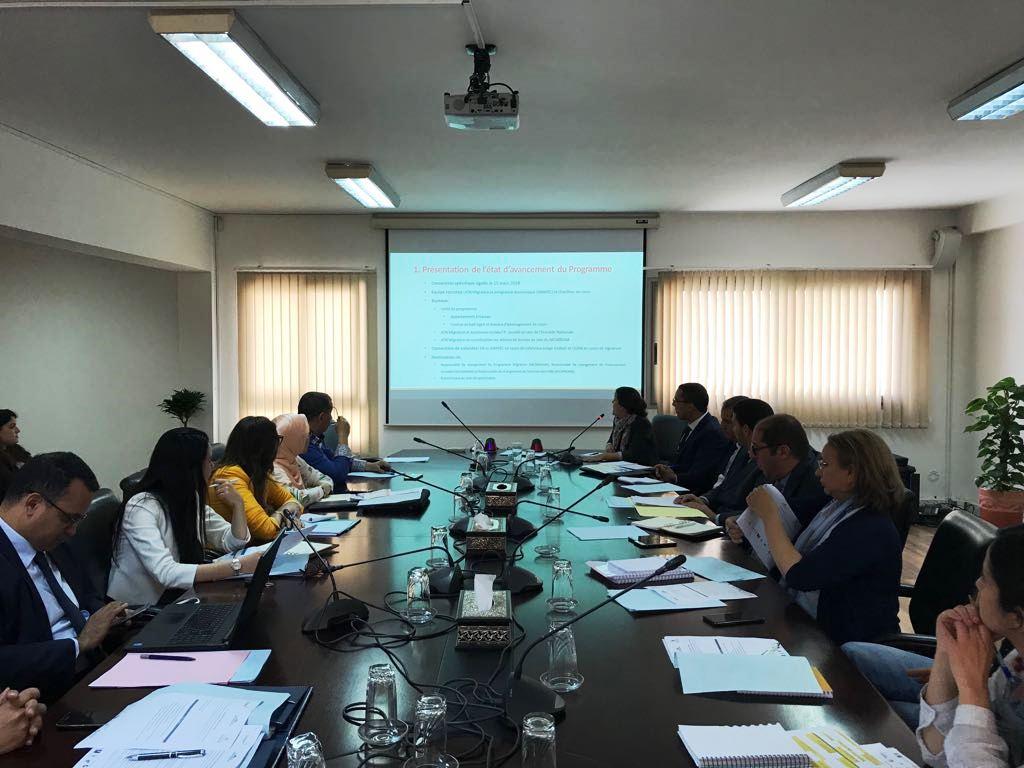
Le « Programme d’appui à la gestion de la thématique migratoire » prêt à démarrer après la première réunion de son Comité de Pilotage
Justine COLOGNESI | 07/06/2018
La première réunion du Comité de Pilotage du « Programme d’appui à la gestion de la thématique migratoire » d’Enabel a eu lieu ce mardi 5 juin 2018 au siège du Ministère délégué chargé des Marocains Résidant à l’Etranger et des Affaires de la Migration (MCMREAM) à Rabat. MCMREAM, Entraide Nationale, Agence nationale de promotion de l'emploi et des compétences (ANAPEC), Confédération Générale des Entreprises du Maroc (CGEM), tous les partenaires d’Amuddu et de MBI, les deux projets qui composent actuellement ce programme, se sont rassemblés afin de faire le point sur son état d’avancement. Ce fut l’occasion de discuter de la planification des activités pour cette première année de mise en œuvre des deux projets. En 2018, le projet Amuddu travaillera de façon étroite avec l’Entraide Nationale afin de formuler une stratégie de communication de proximité sur l’offre de services disponibles ainsi que d’établir les critères d’éligibilité et les procédures pour l’octroi d’indemnités financières facilitant l’accès de personnes migrantes en situation de vulnérabilité aux formations professionnelles. Par ailleurs, en collaboration avec l’ANAPEC, le projet élaborera une étude pour identifier la meilleure façon d’adapter les services d’accompagnement à l’auto emploi aux spécificités de la population migrante. Il établira également un plan de renforcement des compétences des membres du Comité Programme 3 (Formation professionnelle et Emploi) chargé du suivi de la Stratégie Nationale d’Immigration et d’Asile. Pour le projet MBI, deux actions phares sont également à retenir pour 2018 : le lancement d’une campagne d’information à destination des porteurs de projet issus de la diaspora marocaine en Belgique, et la mise en place d’un consortium d’opérateurs qui encadrera la sélection de ces porteurs de projet.
-

2018 Youth Job Fair – big success
Marion FISCHER | 05/06/2018
Kon Tum held its 2018 Youth Job Fair on 31 May, jointly organized by the Center for Employment Services, the Ho Chi Minh Youth Union and the RALG project. Hundreds of young people, among them many young men who are about to finish their military service, handed in their job applications to the companies represented there or received counselling on how to become a start-up. Currently there are 52 enterprises and organizations, who offer around 4,000 jobs, ranging from textile and shoe industry to bio fertilizer, construction, education institutes and beyond. There were also 300 offers for jobs abroad. Job offers often come with proposals for further education and on-the-job training. Start-ups can take out accessible bank loans and receive a start-up training. At the down side, the current analysis of the job market in Kon Tum shows many problems, which need to be solved by the Job Center together with education institutes and employers: unemployment among ethnic groups who lack essential qualifications, prevalence of seasonal work and missing job safety with no accident insurance.
-
Launching the business plans of our partner institutes in Karamoja
Hanna DEKERK | 04/06/2018
Economic and political partners from the local as well as the national level gathered on the 21st and 22nd of May at St.-Daniel Comboni in Moroto and Nakapiripirit Technical Institute to admire the institutes’ newly edited business plans.The Support to Skilling Uganda project (SSU) with financial support from Irish Aid, assists these two partner institutes in Karamoja to become modern, relevant and demand driven Centers of Excellence for a particular trade. While St-Daniel Comboni focuses on Construction, Nakapiripirit TI specializes in Agro-business and Agriculture. The first step in this process is the development of business plans to guide the institutes in their transformation. Irish Ambassador Findbar O’Brien added that “Development partners, local and central government must work together to offer practical solutions to improve the quality of education, for instance through the involvement of the private sector. ” This idea of public-private-partnerships to strengthen skills development is a guiding principle in the Skilling Uganda strategy. Through internal self-assessments and external management coaching, both technical Institutes created their own business plan. They worked out their performance indicators, based on the Skilling Uganda Strategy, to set realistic targets and follow up on their objectives. Commissioner for Economic Policy and Planning , Mr. Fredrick Matyama added that “When the training makes people skilled, it will carry to others. That’s how we will make Business, Technical and Vocational Education (BTVET) more respected.” SSU Karamoja shall soon start an awareness campaign with such role models to attract Karamojong youth, and especially girls and women, to BTVET. Based on the business plans, SSU shall assist the institutes with infrastructural improvements, management training, relevant equipment and coaching in terms of improving work-based learning practices, assessing market relevance of training programs, training of trainers, career guidance, tracing of graduates, etc. An additional aim is to feed the lessons learned from the implementation of the Skilling Uganda strategy in different regions into the educational reform process on the national level.
-
Enabel participe aux Journées européennes du développement 2018 (JED)
Meriem HILALI | 30/05/2018
Les Journées européennes du développement (JED 2018) se tiendront les 5 et 6 juin 2018, à Tour & Taxis à Bruxelles. Organisées par la Commission européenne, les Journées européennes du développement (JED) rassemblent chaque année la communauté du développement (plus de 8.000 visiteurs) pour un partage d’idées et d’expériences pouvant inspirer de nouveaux partenariats et de nouvelles solutions innovantes aux défis les plus urgents dans le monde. Sous le thème principal des « Femmes et filles à l’avant-garde du développement durable : protéger, autonomiser, investir », le programme des JED 2018 s’articulera autour de trois grands thèmes, devenus prioritaires dans le contexte mondial actuel : « Garantir l’intégrité physique et psychologique des femmes et filles », « Promouvoir les droits économiques et sociaux, ainsi que l’autonomisation, des femmes et filles » et « Renforcer la voix et la participation sociale des femmes et filles ». Cette année, le programme comprendra plus de 120 sessions et plus de 90 stands. Enabel sera présente avec un stand où sera exposé le projet de développement des filières du safran et du palmier-dattier dans les régions Souss-Massa et Drâa-Tafilalet (Filière safran) mené au Maroc. Sous le titre « Women, key players in the blooming saffron value chain of Morocco», nous vous présenterons de façon interactive les activités menées pour l’autonomisation sociale et économique des femmes rurales marocaines au travers de leur participation au sein des coopératives et organes de décision. Pour nous retrouver sur le site web des JED, cliquez sur le lien suivant : https://eudevdays.eu/community/sessions/612/women-key-players-in-the-blooming-saffron-value-chain-of-morocco
-
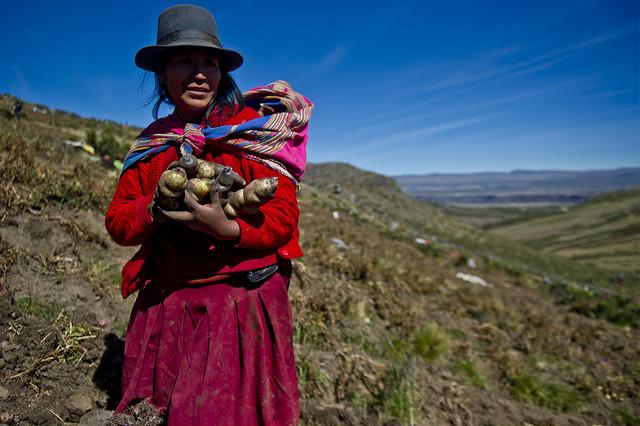
La Coopération belge participe au dixième Congrès International de la pomme de terre à Cusco – Pérou
Véronique GERARD | 29/05/2018
Lima, mai 2018 | Dans le cadre de ce Congrès, la Belgique est bien représentée avec une des délégations étrangères les plus grandes de cet évènement, composée de représentants du secteur privé (trois entreprises belges), représentants belges du Centre International de la Pomme de terre, représentants de la coopération belge (de l’ambassade belge à Lima, d’ONGs belges, du Programme de la Coopération belge – PRODERN). L’agriculture est un des secteurs d’intervention prioritaires de la coopération belge au Pérou et en Bolivie. Avec un apport de plus de 100 millions d’euros sur ces 50 dernières années, la Coopération belge affiche des résultats probants d’impact social et économique touchant de nombreuses familles de producteurs dans les Andes.A travers ses divers programmes, la coopération belge a appuyé la consolidation de 19 filières productives, entre autres, celle de la pomme de terre native et organique avec 140 espèces récupérées et revalorisées.“Notre engagement est la promotion d’une agriculture durable et inclusive,” a commenté Koenraad Lenaerts, Ambassadeur de Belgique au Pérou, lors de la réception donnée á l’occasion de cette mission et pour la bienvenue à M. Romain Cools (belge), Président de ce Congrès Mondial de la pomme de terre.Le PRODERN – Programme de Développement durable et de gestion stratégique des ressources naturelles – participe à ce congrès. Son stand présente, entre autres, les différentes variétés de pommes de terre natives rapatriées dans la Province d’Andahuaylas à Huayna, Pomacocha et Pampachiri.Le PRODERN a appuyé quelques 341 familles associées à 18 organisations de pomme de terre natives organiques. Il a aussi permis aux agriculteurs et agricultrices de renforcer leur sécurité alimentaire et leurs liens commerciaux vers une demande plus équitable axée sur le « bio negocio ». Mais le plus important est que les bénéficiaires locaux et autorités régionales ont pris conscience de la valeur de l’agro biodiversité de leur région et l’importance de la conserver. Afin de sceller cette prise de conscience, une demande a été introduite auprès du Ministère de l’Agriculture dans le but que cette zone soit déclarée comme « Zone de conservation de l’agro biodiversité ». En étroite collaboration avec le Centre International de la Pomme de terre, quelques variétés ont été rapatriées vers leur terre originelle. Au total, quelques 124 variétés natives sont cultivées et conservées dans cette zone, grâce au travail de ces hommes et femmes des Andes. Voir le Livre de la caractérisation des pommes de terre natives d’Apurimac (publication du PRODERN/CTB/Enabel) : http://prodern.minam.gob.pe/documentosInfographie sur l’appui de la coopération belge á la filière de la pomme de terre dans les Andes : https://drive.google.com/drive/u/1/folders/1NZE0SBVHIV1BLvNFj3Q67oF-uQrLEUgB Voir le Congrès International de la pomme de terre à Cusco : http://belgicacontigo.com/novedades/aporte-belgica-agricultura-sostenible-supera-7millones-euros/ Autres nouvelles sur le congrès : https://www.facebook.com/Belgicacontigo/?hc_ref=ARQEzj6-ZHDLxMmNmcgjpl78gRUtDeroSXmkdXWq1QolIymU_NP9o9Bup9yyLeBH9xA&fref=nf Page web du PRODERN : http://prodern.minam.gob.pe/
-
Intégration maraîchage et pisciculture, une innovation dans l’Atacora
Reece-hermine ADANWENON | 29/05/2018
AMSANA, programme de sécurité alimentaire et nutritionnelle, est allé en mission d’identification des sites et de mobilisation des maraîchers afin qu’ils intègrent la pisciculture aux activités de maraîchage. Cette action s’inscrit dans l’accompagnement des communes de l’Atacora, dont celle de Boukombé, qui à travers le point-focal, Sébastien, est porteuse du développement de l’intégration maraîchage et pisciculture. Les avantages de l’intégration maraîchage et pisciculture En effet, la combinaison de plusieurs productions offre des avantages indéniables à l’agriculteur. Si une de ses productions échouent, l’autre pourra compenser le manque, et l’association des composantes crée une symbiose sur les sites qui permet d’augmenter la production globale. De plus, aujourd’hui, l’eau est une ressource nécessaire pour arroser les plantes et la pisciculture permet d’enrichir cette eau, qui, grâce à la fiente des poissons devient un engrais naturel. Il y a donc une optimisation de l’utilisation de l’eau afin d’augmenter la production agricole d’une part, et d’autre part de profiter d’un apport protéinique supplémentaire lors de la consommation des poissons. La pisciculture associée au maraîchage contribue au bien-être des populations et à une meilleure gestion des ressources. L’approche de AMSANA Pour ce faire, deux approches vont être mise en pratique : les étangs et les bassins hors-sol. Les infrastructures seront réalisées selon une approche communautaire, par les maraîchers eux-mêmes, dans une logique de reproductibilité. Ensuite, les maraîchers seront formés à l’élevage de poissons. Deux personnes ressources ont suivi l’équipe AMSANA afin de définir précisément quel ouvrage entreprendre selon la disponibilité de l’eau sur les sites et afin de s’assurer de la mobilisation des maraîchers. L’idée est que selon des techniques d’alimentation locales et donc peu coûteuses, le coût de production sera diminué et cela rend accessible cet aliment riche en nutriment. Les maraîchers disent vouloir commencer les travaux au plus vite, et, à travers les discussions pendant les assemblées, ils étaient motivés à déguster les futurs « poissons bicyclette », à l’image du poulet bicyclette qui courent déjà dans les villages. Mais d’abord il va falloir creuser, les travaux démarrent dès la fin du mois de Mai. Déborah CHANTRIE
-
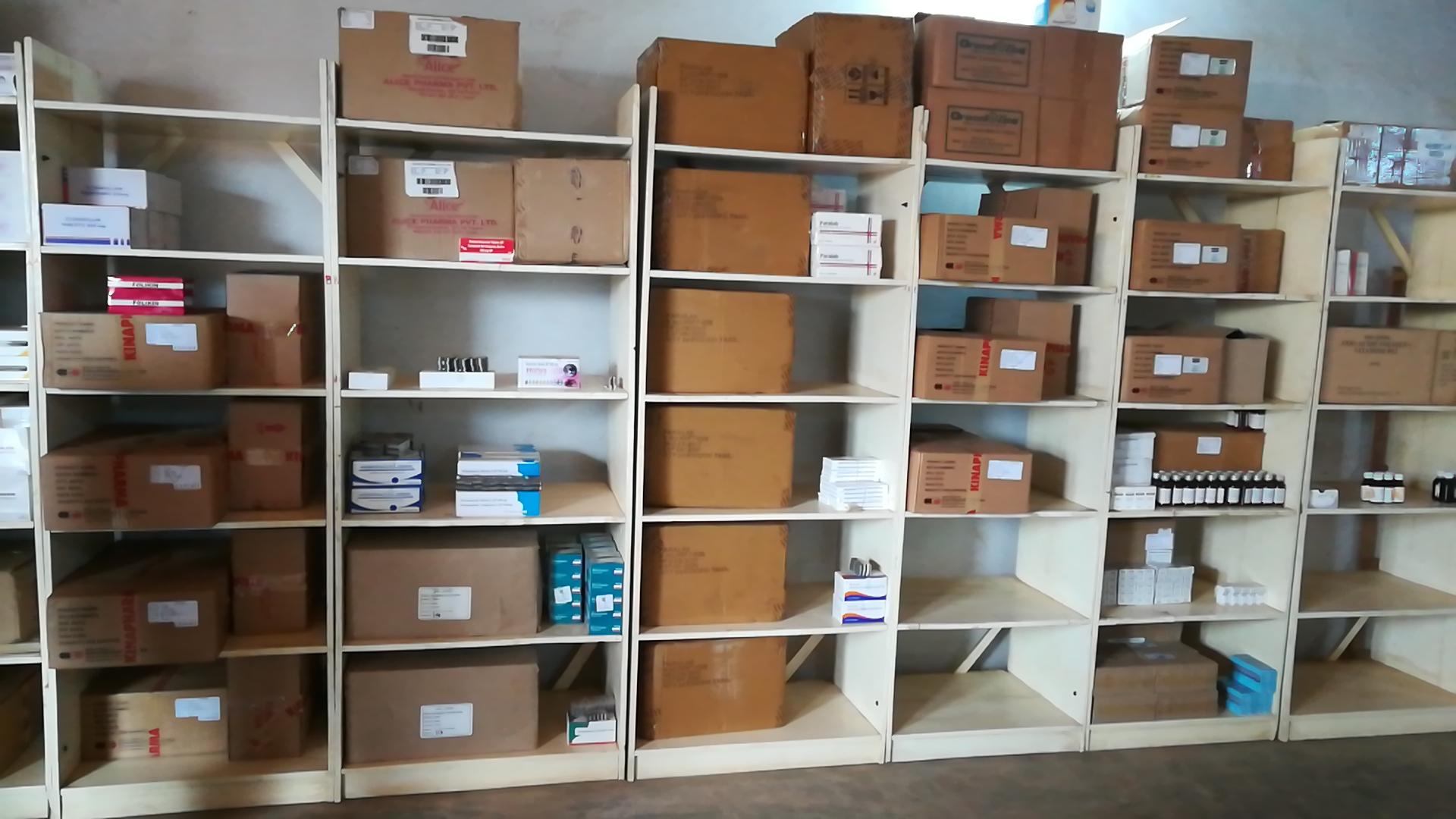
Pass-Sourou met fin à la rupture récurrente en médicaments dans les centres de santé de la Commune de Dogbo
Reece-hermine ADANWENON | 29/05/2018
La pluie qui s’est abattue toute la matinée du Vendredi 25 mai 2018 sur la Commune de Dogbo et ses environs n’a pas empêché les populations de faire massivement le déplacement au Centre de santé communal de Dogbo. Objectif de ce déplacement, assister à la cérémonie d’inauguration d’un dépôt répartiteur de médicaments annexe. Construit et équipé grâce à l’appui technique et Financier de Enabel au Bénin à travers le Programme d’Appui au Système de Santé (PASS-SOUROU), ce dépôt répartiteur apporte une solution durable à des ruptures fréquente de médicaments dans les formations sanitaires de la commune. « La lutte contre les cabinets privés illégaux et la vente illicite de faux médicaments, vient ainsi d’être renforcer avec la proximité du nouveau dépôt répartiteur de médicaments basé dans la commune de Dogbo. Nous osons dire toute notre gratitude aux responsables du programme Pass-Sourou financé par l’Agence belge de développement ». Ainsi s’est exprimé Michel AYI AMAKOE, président de la Cellule Communale des Utilisateurs des Services de santé de Dogbo (Cuss). A sa suite, de nombreuses voix se sont élevées pour reconnaitre la valeur sociale de cette œuvre et pour féliciter le conseil communal en général et le Maire de Dogbo en particulier pour son implication personnelle dans l’aboutissement heureux de ce projet datant de plus de deux ans. En effet, la Zone Sanitaire de Aplahoué, Dogbo et Djokotomey (ADD) regroupe 03 communes qui sont desservis par un seul dépôt répartiteur en médicaments basé à Aplahoué depuis plusieurs années. Vues les nombreuses plaintes de rupture de médicaments formulées régulièrement par les populations, le maire de Dogbo a porté vers l’Agence belge de développement son souhait de voir un dépôt répartiteur de médicaments annexe installé dans sa commune. Ce qui ferait donc de la commune de Dogbo, la première et seule commune à disposer d’un dépôt répartiteur annexe. D’une valeur de plus de 13 millions de Fcfa, le dépôt répartiteur construits dans l’enceinte du centre de santé communal de Dogbo est entièrement financé par l’Agence belge de développement Enabel au Bénin à travers le programme Pass-Sourou. Il dispose d’un stock bien fournis en médicaments de première nécessité et est immédiatement utilisable par les populations. « Le travail a été difficile mais l’accouchement a fini par avoir lieu. Et le bébé que nous présentons est à tout point de vue en bon état », a déclaré Jean-Claude AGNICA, représentant le Directeur Départemental de Santé (DDS) du Mono empêché. « Quand il manque une seringue, du paracétamol dans les centres de santé de la commune, celui qui ne dors pas c’est moi. Maintenant je vais pouvoir dormir », a laissé entendre, tout heureux, Vincent Codjo AKAKPO, maire de la commune de Dogbo. Il a remercié Enabel à travers son programme Santé grâce à qui ce rêve est devenu réalité. Vincent AKAKPO a également félicité les membres de son conseil communal qui lui ont apporté un soutien constant et déterminant dans la l’aboutissement de ce projet. Le maire a invité les membres des Comités de Gestion des Centres de Santé de la commune, les membres des CUSS et les sages de la ville à veiller à la bonne gestion du dépôt si chèrement acquis afin de mettre fin définitivement aux plaintes des populations. Graziella GHESQUIERE, Co responsable de Pass-Sourou, volet demande, dans son intervention n’a pas manqué de rappeler le rôle déterminant que joue Enabel dans l’accompagnement des élus locaux pour le renforcement de la bonne gouvernance au niveau local. Pour elle, la construction de ce dépôt permettra de satisfaire les besoins des populations en médicaments et de garantir la disponibilité des médicaments de qualité dans les formations sanitaires de la localité. A ce propos et à la suite du maire de la commune, Graziella a exhorté à une plus grande transparence dans la gestion dudit dépôt ceci à travers une implication non seulement de la mairie mais également des communautés. Soulignons que la mise en place, le fonctionnement et la gestion de l’annexe du dépôt répartiteur de médicaments de Dogbo sont formalisés par un protocole d’entente signé entre la mairie, le Médecin Coordonnateur de la Zone Sanitaire et le Directeur Départemental de la Santé du Mono. Par Reece-Hermine ADANWENON
-
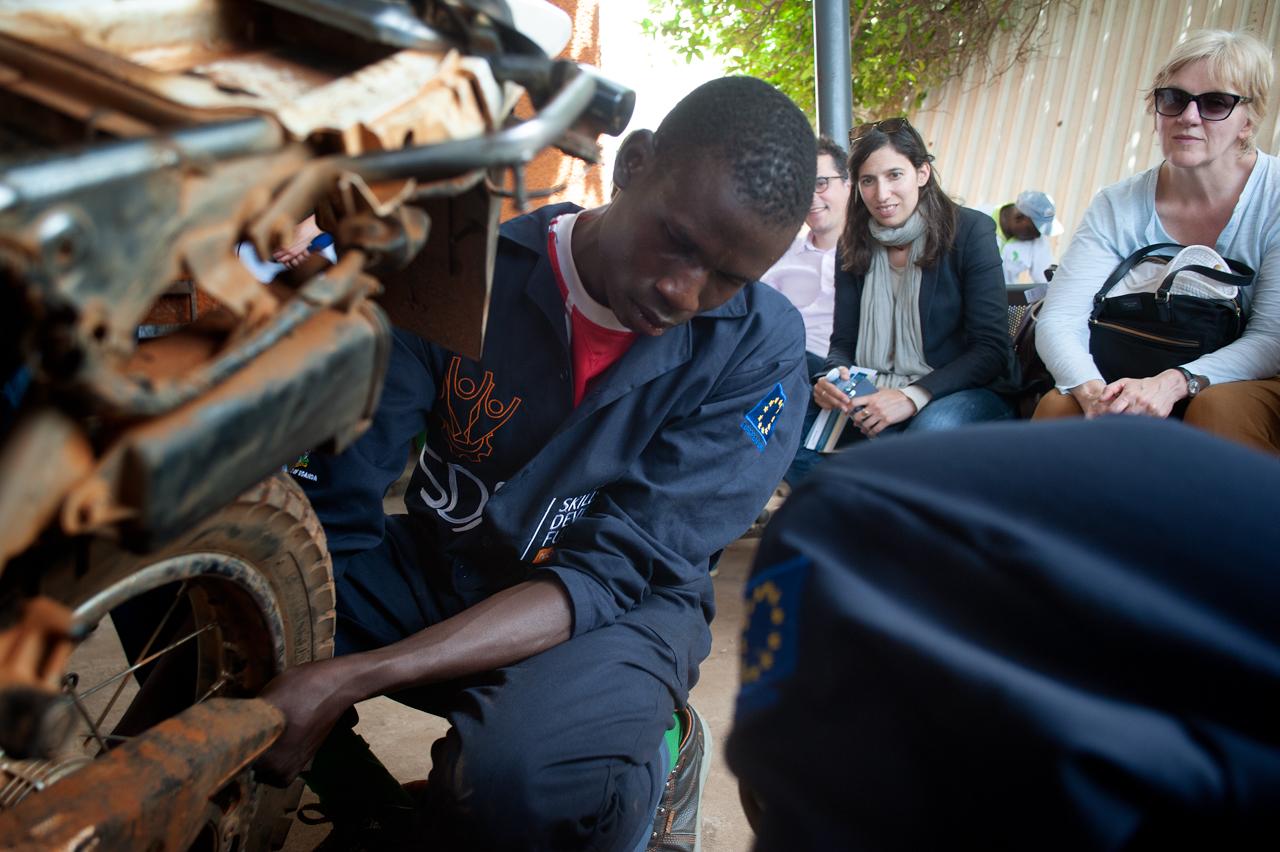
“We really learn to work with our hands”
Hanna DEKERK | 29/05/2018
On the 9th of May 2018, the technical servicing center of Africa Action Help (AAH) in Adjumani received a visit from 5 members of the European parliament’s Committee on Development (DEVE), headed by chairperson Mrs. Linda Mcavan. The delegation interacted with students in welding, moto vehicle mechanics, motorcycle repair and plumbing. Enabel’s Support to Skilling Uganda project assists in the organization of these practical, short-term trainings through a Skills development fund for refugees and host communities, fueled by the European Union Trust Fund (EUTF). AAH teamed up with local artisans to organize qualitative and market-relevant trainings with the financial aid of the Skills Development Fund. Currently, students gain practical experience in the garage during their 8-month trainings, including industrial attachment and coaching to work. And they appreciate it: “We now have better materials so we can exercise on real motorcycles and cars. We really learn to work with our hands.”, says 17-year old Motor Vehicle Repair student William Ojok. AAH manager Julius Oboth adds that “Currently students are better protected on the work floor, because we bought boots, overalls and glasses. ” The visit concluded with a virtual reality demonstration used during SSU’s awareness campaigns to attract youth to technical and vocational training. With the help of virtual reality glasses, videos from activities in top-notch workshops and garages are brought to life and capture the attention of idle youth. “This is an innovative way to bring technical training to remote areas.” Commented Linda Mcavan, chairperson of the DEVE delegation. “After this visit we can explain in the European Parliament that the EUTF contributions are used in a constructive way, because we saw it with our own eyes.”
-

Conciliators make communities strong and resilient
Marion FISCHER | 29/05/2018
In 4 training courses in May 2018, 141 conciliators from around 75 communes in Kon Tum province acquired knowledge of the rules of engagement, new skills and methods for the settlement of conflicts that are below the threshold of prosecution. Vietnamese laws and village conventions are the basis for their work. Understanding the reasons and motivations of people to get into conflicts is key to developing empathy with the people’s case. The trained conciliators aptly help the people to overcome the causes of their dispute, find a compromise or prepare for settlement in court.
-
Un leader engagé en faveur de la scolarisation de la jeune fille dans sa communauté
Céline MEWISSEN | 28/05/2018
L’Imam Abarchi, leader religieux, prêche lors de la prière hebdomadaire du vendredi depuis environ cinq ans. C’est un pionnier dans son village de Birni Falla dans la commune de Douméga à Dosso (Niger). Il a en effet posé un acte, inimaginable il y a à peine un an dans cette communauté rurale traditionnelle : remettre la dot apportée par le prétendant de sa fille Aicha en classe de 3ième, admise au BEPC session 2017 afin de lui permettre de poursuivre ses études au Lycée de Douméga. Le mariage précoce était jusqu’alors la pratique la plus valorisée socialement pour toute jeune fille scolarisée. Pourtant, son geste a été relativement bien compris par son entourage car, selon lui, « à Birni Falla, les villageois ont vu des exemples concrets de l'impact de la réussite scolaire d'une jeune fille pour la jeune fille elle-même, sa famille et sa communauté ». Il estime que les normes et les pratiques sociales relatives au mariage précoce évoluent. Grâce à une approche de sensibilisation relationnelle, « la majorité des parents d'élèves privilégient désormais la réussite scolaire de leurs filles sur la pratique traditionnelle du mariage précoce ». Auparavant dès qu'une jeune fille était exclue du système public après les deux tentatives permises au BEPC, elle était systématiquement mariée. Maintenant, ce sont les parents eux-mêmes qui se débrouillent pour lui permettre de s'inscrire dans un collège privé à Douméga afin de lui donner une nouvelle chance d'obtenir ce diplôme d'études secondaires, indispensable pour avoir accès à des formations diplômantes. Pour démontrer son engagement sans faille, l’Imam Abarchi s'est dit disponible pour être un ambassadeur du plaidoyer en faveur de la scolarisation de la jeune fille dans les communautés rurales où les individus continuent de privilégier le mariage précoce. Dans ce cadre, il a déjà été primé en tant que leader religieux le plus engagé en faveur de la scolarisation de la jeune fille dans sa communauté par l'Honorable Sultan Djermakoye, la plus haute autorité traditionnelle de la région lors d’une cérémonie. Des personnes comme l’Imam Abarchi qui osent défier les stéréotypes culturels sont incontestablement des modèles locaux à promouvoir socialement.
